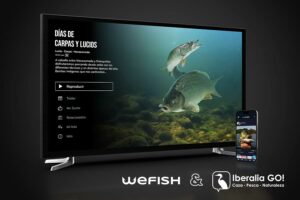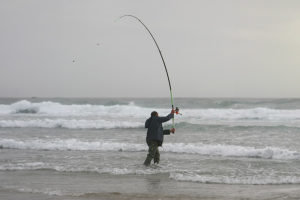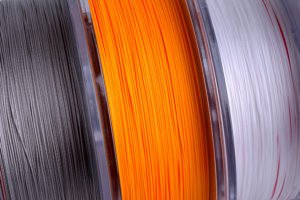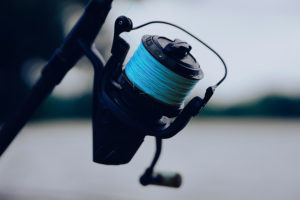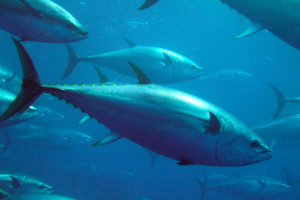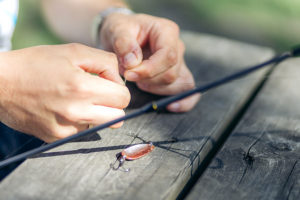Nos encontramos en una época del año perfecta para la pesca de calamares, pulpos y sepias. El mejor método para la captura de cefalópodos es la pesca a eging. Se trata de una modalidad de pesca muy simple. Este estilo de pesca de origen japonés se ha extendido por todo el mundo gracias a su eficacia y a su facilidad.
La pesca a eging es tan popular debido, en primer lugar, a que se trata de especies que puedes encontrar en gran parte del planeta, por lo que es una práctica muy extendida en la mayoría de los países del mundo. En segundo lugar, es una modalidad muy divertida, que podemos practicar en costa o desde una embarcación. Además es sencilla de realizar, por lo que no necesitas ser un experto de la pesca de calamares o especialista en pescar pulpos para obtener el éxito en tus jornada de pesca.
Para conocer todos los detalles sobre la pesca a Eging hablamos con una de las referencias de este método dentro de la comunidad WeFish, Carmelo Sánchez, más conocido por nuestros usuarios como Melo.

1. Conocemos a Melo
Hola, me llamo Carmelo Sánchez y soy de Murcia. Llevo pescando desde que tengo uso de razón y considero la pesca como una forma de vida. Aunque mi modalidad principal es el surfcasting, llevo pescando al eging desde costa 9 años y lo considero una modalidad más que atractiva ¡engancha muchísimo!
Hablando un poco sobre eging, tengo que reconocer que esta es una modalidad que esta teniendo un auge tremendo y de la que anteriormente no había demasiada información en la parte del Mediterráneo aunque es cierto que en el Norte la pesca del calamar es muy tradicional y de ellos hemos aprendido mucho.
2. ¿Cómo se realiza la técnica de pesca a Eging?
Para realizar esta técnica solo necesitamos caña, carrete y egi (señuelo). Puede parecer fácil pero no lo es, ya que es difícil aprender sobre esta pesca cuando no puedes practicarla durante todo el año. Esta técnica esta basada en lanzar y recoger el señuelo o egi, que tendremos que dejar profundizar hasta que creamos que ha tocado fondo. Una vez este el señuelo en el fondo, lo animaremos a base de tirones con la caña, intentando imitar un pez herido o una gamba que huye de un depredador.
3. ¿Qué época es la mejor para pescar a Eging?
En las aguas del mediterráneo la mejor época para esta pesca esta comprendida entre los meses de más frío del año, ya que es cuando los calamares, sepias y pulpos se acercan más a la costa. Aunque sí que es cierto que podemos pescarlos durante todo el año, será en los meses de septiembre a marzo cuando más activos estén. También en estos meses será cuando los ejemplares que podamos capturar sean de mayor tamaño, ya que estos llegan a la costa para completar el ciclo reproductivo.
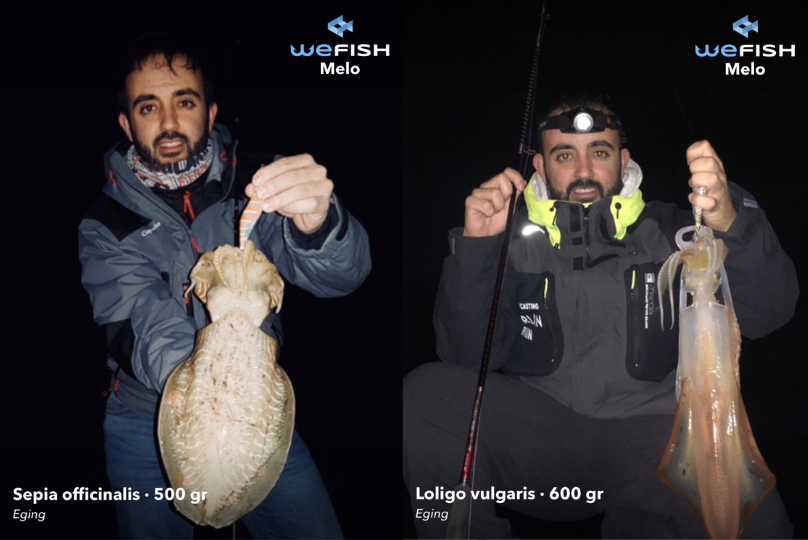
4. ¿Desde dónde se puede practicar la pesca a Eging? ¿Cuál es el mejor lugar?
Esta modalidad de pesca se puede practicar desde todos los pesqueros. Podemos encontrar sepias, pulpos y calmares desde la misma orilla de la playa hasta pateando todos las piedras del puerto o acantilado. Siempre y cuando estemos en la fecha idónea para ellos es fácil que se muevan por todos estos lugares. Si tuviera que elegir un lugar que creo que el idóneo para esta pesca serían las zonas con una profundidad entre los 3 y los 8 metros en la que el fondo sea mixto con algunas rocas, arena y sobre todo alga posidonia ya que es donde más se esconden.
5. ¿Cuál es el mejor material para pescar a Eging? (Cañas, Carretes, Hilos, Señuelos…)
Este tema es demasiado personal ya que cada persona preferirá un equipo diferente según su complexión física, su nivel de pesca e incluso su manera de pescar. Yo actualmente estoy pescando con un modelo de caña de Caperlan para eging que salió al mercado a principios de 2020 y se trata de la Ukiyo 900, en medida 2,70. Este modelo de caña de eging es el primero que tengo con esta medida de 2,70 metros pero he de decir que me he adaptado muy bien a ella. Destacaría su ligereza y lo bien que se comporta tanto con señuelos de menor tamaño como con los de tamaños 3,5 y hasta 4.0.
Esta caña además puedo utilizarla para pesqueros donde la altura al agua sea mayor o necesite sortear las primeras rocas de delante a la hora de recoger o salvar mi señuelo. La llevo utilizando desde principio de temporada y tiene un puntero ultra-sensible que detecta el más mínimo roce del señuelo con un calamar.
En cuanto al hilo, siempre utilizo hilo trenzado en medidas de 0.08 y 0.10 milímetros. Como sabéis la principal cualidad del trenzado es que no tiene elasticidad y es muy resistente, por lo que nos permite usar los diámetros que hemos dicho anteriormente para lanzar el señuelo lo más lejos posible y tener bastante sensibilidad.
En referencia a los egis que suelo utilizar se encuentran entre los tamaños 2.0 y 4.0 y pesos comprendidos entre 12 gramos y 25 aproximadamente. Los colores de estos señuelos son muy variados y como se suele decir, en la variedad está el gusto. No hay un señuelo único para todas las jornadas de pesca así que tendremos que hacer una inversión en llenar la caja con señuelos de diferentes modelos, pesos y colores.
6. ¿Cuál ha sido tu mejor captura usando esta modalidad?
Aunque cada captura es diferente y todas tienen un bonito recuerdo quizás me quede con esos grandes ejemplares que es lo que todos vamos buscando. Recuerdo un bonito calamar en un día en el que la actividad era nula, aquello parecía un desierto cuando entre charla y charla con mi compañero Lucas, este me dice «pon aquel señuelo que tanto nos funciono hace 3 años, el rojo de 2€». Mi cara fue de asombro ya que era un señuelo que tenia olvidado al fondo de la caja, más que usado, oxidado y que jamás habría puesto en ese momento. Pues fue ponerlo, lanzar y no llevaba 30 segundos en el agua cuando un calamar de buen tamaño agarró el señuelo, brindándonos una pelea preciosa y las consecuentes risas a raíz de la captura con ese señuelo.
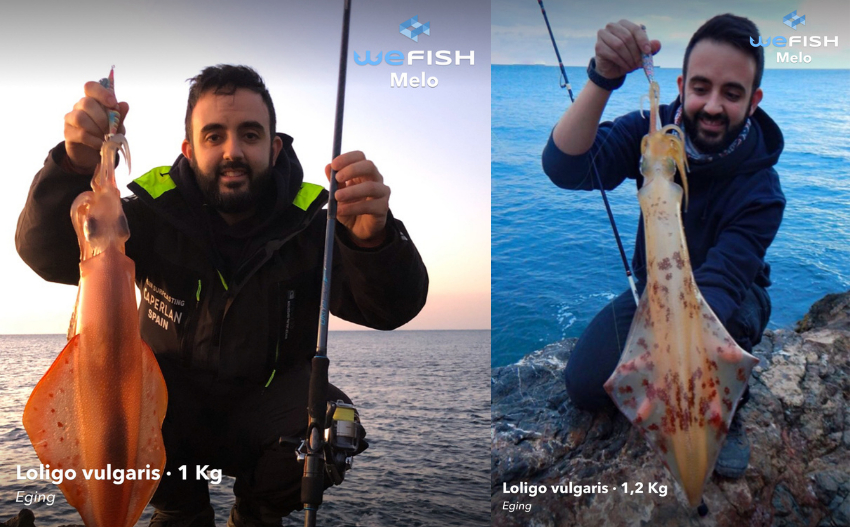
7. ¿Cuál es el mejor consejo para alguien que practica la pesca a Eging por primera vez?
Observa, aprende y ¡NUNCA te rindas! Esta claro que en la pesca nunca hay que tirar la toalla pero, cuando nos iniciamos en una modalidad nueva, siempre nos surgen las dudas de si estaremos haciendo bien los movimientos, si el señuelo es el adecuado o si estarán o no los calamares en este pesquero nuevo.
8. ¿Cómo son los movimientos de los Egis para capturar calamares?
Para capturar calamares tenemos que dotar al egi de un movimiento atractivo, para que los calamares le ataquen. Para ello podemos diferenciar en 2 o 3 tipos de movimientos:
- Movimiento en jerks: este se basa en dejar caer el señuelo al fondo y cada 15 o 20 segundos dar 3-4 tirones enérgicos de la caña hacia arriba. Esto provoca que el señuelo haga un movimiento en “dientes de sierra”. Estos movimientos suelen funcionar cuando los calamares están muy activos y cazan a media altura de agua.
- Recogida lineal: Una vez que el egi toca el agua, contamos algunos segundos para que descienda hasta la mitad de la profundidad e iniciamos una recogida lineal, muy lenta y con algún toque de puntera. Esto se realiza con la puntera de la caña hacia abajo y de manera muy lenta. Muy eficaz cuando los calamares están recelosos y muy parados en el fondo.
- Mezcla de jerks y recogida lineal.
9. Despedida
Sin más dilación, espero que os guste el artículo de este humilde pescador. Al que cada captura y cada momento de pesca le sabe especial y que por esos momentos es por los que sigue mereciendo la pena seguir pescando.
¡MUCHA TINTA PARA TODOS!
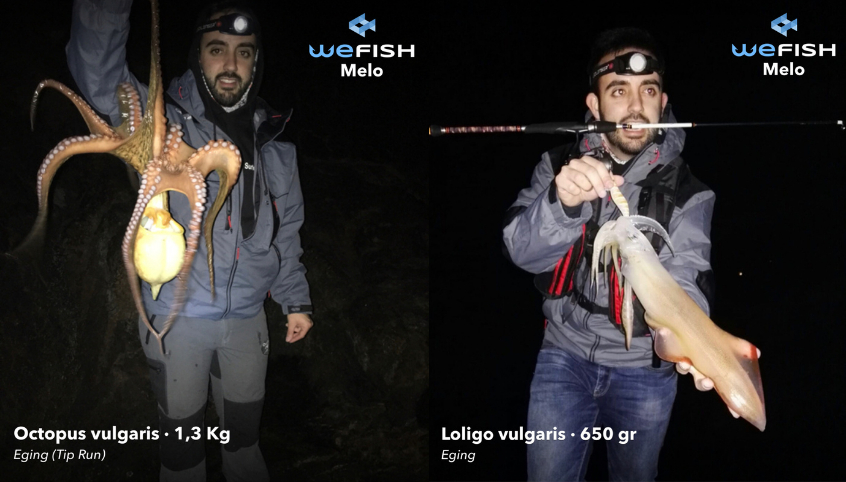
Entra en WeFish para subir todas las nuevas capturas que consigas con esta guía de pesca a Eging o para ver increíbles capturas de pulpos, calamares, sepias… ¡Y mucho más!




